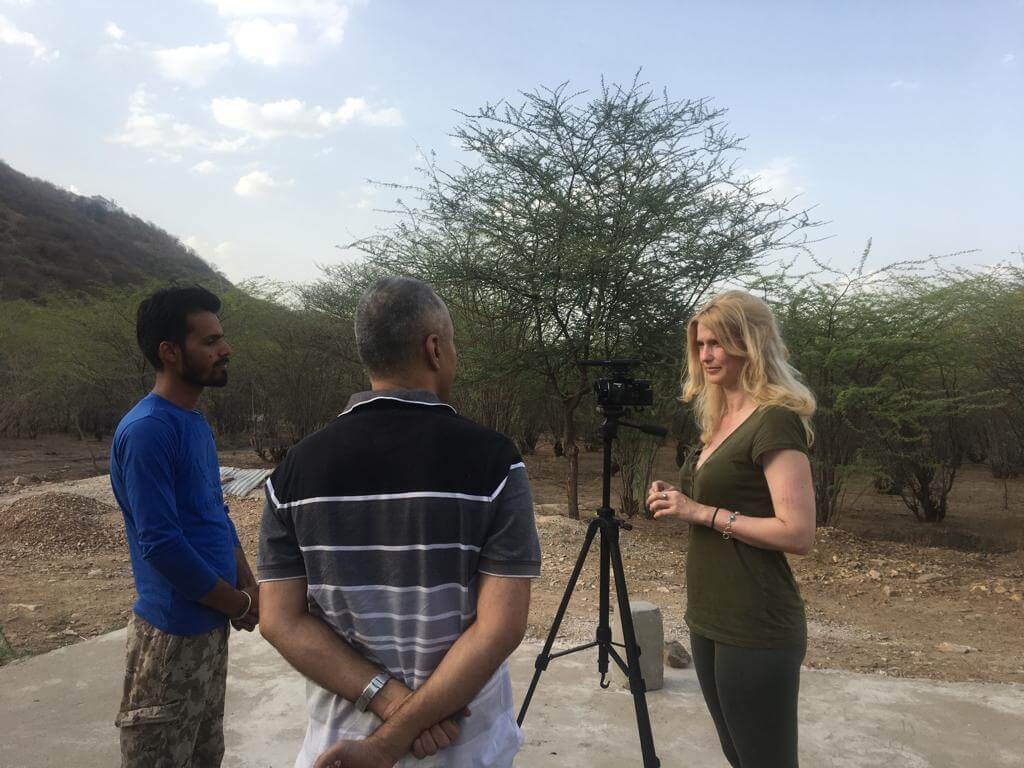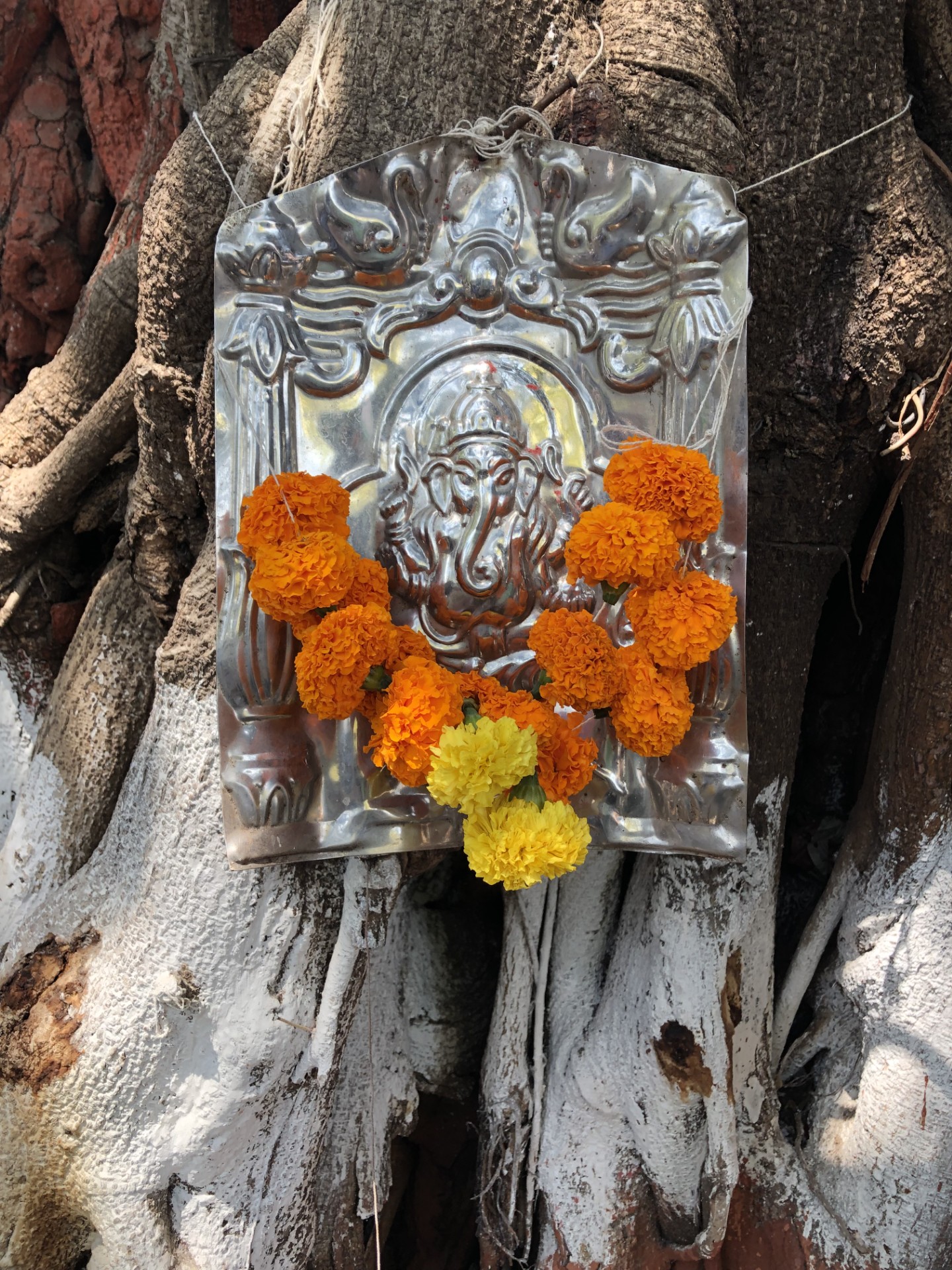Giving Makes Earth Sacred
2024 End-of-Year Impact Reporting Kickoff
Our donors fuel WILD’s mission and vision. Every one of our successes belongs as much to them as it does to WILD. Please consider a gift to support WILD’s programs here.
The trouble with sacrifice is that it feels so much like loss when in fact it may be the key to a more purposeful world.
Author: Amy Lewis, WILD’s Managing Director, Policy & Campaigns
In February 2019, as evening descended over Jaipur’s Jhalana Leopard Reserve and a handful of Indian and North American conservationists, myself included, waited to catch a glimpse of the urban park’s eponymous species, Dr. Parvish Pandya of the Sanctuary Nature Foundation instructed me on the meaning of sacrifices to Hindu deities. Earlier in the day I had divulged to him and some of his colleagues at Sanctuary Asia that I kept a small, bronze elephant-headed statue in my apartment back in Colorado. They had been largely supportive of an Anglo woman’s adoption of a Hindu deity up until the point I also let slip that the idol subsisted primarily on a diet of cupcakes.
“Cupcakes?” Dr. Pandya exclaimed, shaking his head in dismay.
Yes, I confirmed, frowning. Cupcakes. When frosted, cupcakes resemble in shape the domed-pastry held in one of Ganesh’s four hands. While not ideal, I admitted, I was making due in a region of the world proliferated by bakeries, not Hindu temples.
After some thought, the zoologist conceded that cupcakes may be an acceptable offering in circumstances such as mine, leaving unsaid any suggestion about the heathen state of lands in which modak, Ganesh’s preferred treat, is not commonly sold on street corners. And with that, I believed the conversation had concluded satisfactorily for all parties involved.
My belief was premature.

Amy interviews local men in 2019 while inside the Jhalana Leopard Reserve in Jaipur, India. During her conversations with Indian conservationists she witnessed first-hand how a sacred relationship with nature is constructed differently across cultures.
Later that day, as gloom gathered beneath the boughs of the Persian mesquite under which we waited, and our group sat in a silent reverie punctuated only by the abrupt beep-like honks of nearby peacocks, Dr. Pandya spoke as if posing a question to the trees themselves, “How often do you make the offerings?”
It took a moment before I understood that his question was addressed to me. Shaking off the contemplative state that had overtaken me, I answered that I tried to make offerings on a weekly basis.
It should be more, he instructed. Daily, even. It’s not as much about the quality of the offering as it is about the consistency. Then: Did I also anoint Ganesh with tea or coffee? How did I greet the god in the morning? What words, specifically, did I use? Ganesh likes to be reminded of his own effulgent radiance. Were my offerings ever made on Wednesdays?
“Wednesday offerings are super-charged,” he informed me.
“Super-charged? What does that mean?”
“It means you derive more benefits from them afterwards when you eat them,” he explained patiently.
Now it was my turn to object. Eat offerings? Sacrifices to the divine were not to be enjoyed by mere mortals like me, I argued.
“On the contrary, my dear Amy! Sacrifices are given to the gods so that we can enjoy them more fully.”
We left that night without seeing a leopard, but as we started to travel the road back out of the reserve, the headlights of our jeep illuminated two men alone in the dark night beneath the even deeper darkness of the trees. Two men alone in the unlit forest home of 25 very healthy free-range leopards. The men had with them neither car, nor armor, nor weapon of any kind. They carried only incense which they were placing in the hollows of tree trunks.
“What are they doing here?” I exclaimed, questioning the wisdom of any motivation that would drive undefended people into a leopard reserve at night.
Dr. Pandya shrugged. “Making sacrifices to the local deities.” And we drove on leaving them to their worship.

Some describe India as country of “nature worshippers.” This is evident in the offerings left on banyan trees across the country. Here, marigolds adorn the figure of Ganesh placed on the trunk of a tree.
That evening, I went to bed haunted by the memory of the men and their incense and the seemingly senseless purpose that had carried them into the menacing night. Looking back, it wasn’t only leopards that I didn’t see that day. The idea that sacrifices could and should benefit those who made the sacrifice was just too alien, too counter-intuitive for me to accept back then. I set the encounter aside and forgot about it for nearly five years.
I found myself unexpectedly revisiting the topic again during the planning for the 12th World Wilderness Congress. Working with our Lakota partners, I encountered their belief that we lose what we keep, but we keep what we give freely. We keep what we sacrifice. The memory of the men in the nighttime reserve returned. What were they giving away that night beneath the trees? Incense, or something more?
And I was suddenly reminded of Dr. Pandya’s words: sacrifices are given so that we can enjoy them more.
In fact, the word “sacrifice” comes from the Latin “sacrificium,” which is a combination of the words sacer (“sacred”) and facere (“to make”). As I dwelled on the lessons I hadn’t quite learned in India and those that I hope I finally learned in He Sápa, the sacred territory of the Lakota Nation, the idea for WILD’s 2024 end-of-year season theme emerged: giving makes Earth sacred. Admittedly, this concept may be difficult for many of us who originate from contemporary Western societies, myself included. But in animist cultures, where even non-biological objects are believed to possess a spirit endowed with a purpose by the Creator, the logic of the statement is almost-self-evident. When we give freely of what we are not immediately using, we unleash the potential for an object, a resource, or even our own energy to fulfill a purpose and to give joy and meaning to the world. In doing so, we honor the Creator or the creative processes that carried us to this moment in our history and set around us a world in which opportunities abound for us to choose well, to choose life, and to choose compassion.
Thus, when we give freely we make our gifts sacred.
I am pleased to report in the following weeks on what WILD, supported by our large donor community, freely gave this year, and how we hope these gifts have improved everyone’s enjoyment of the world we share with millions of other lifeforms. You can read more about these gifts and our impact in WILD’s 2024 annual report linked below.
You can also follow this blog where we will post a different story about the gifts given and sacrifices made by WILD’s staff, donors, and partners every week until the end of the year.
But I don’t just want to share WILD’s stories. I want to hear yours as well. What did you give freely of this year? And how have these gifts improved your enjoyment of the wondrous, life-giving planet we all share? Each week on WILD’s social media accounts linked here and here you will have an opportunity to share about what you gave this year and why that was sacred.
As we head into a moment of history where we will all surely be called to sacrifice more, let us remind each other that our gifts unleash the beneficial purpose and potential of the energy and resources we release, enabling us to enjoy them more and empowering us to participate in the production of the sacred and the healing of our planet.
This blog is the first in a series of 5 blogs sharing stories from WILD’s work and impact during 2024. If you are inspired by the work and ideas in these blogs, please consider giving a donation to WILD here. WILD’s impact belongs as much to our community of donors as it does to the members of our organization.
0 Comments